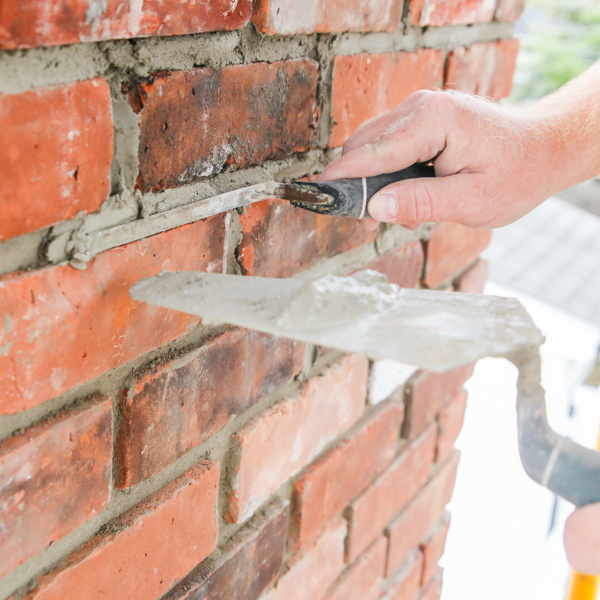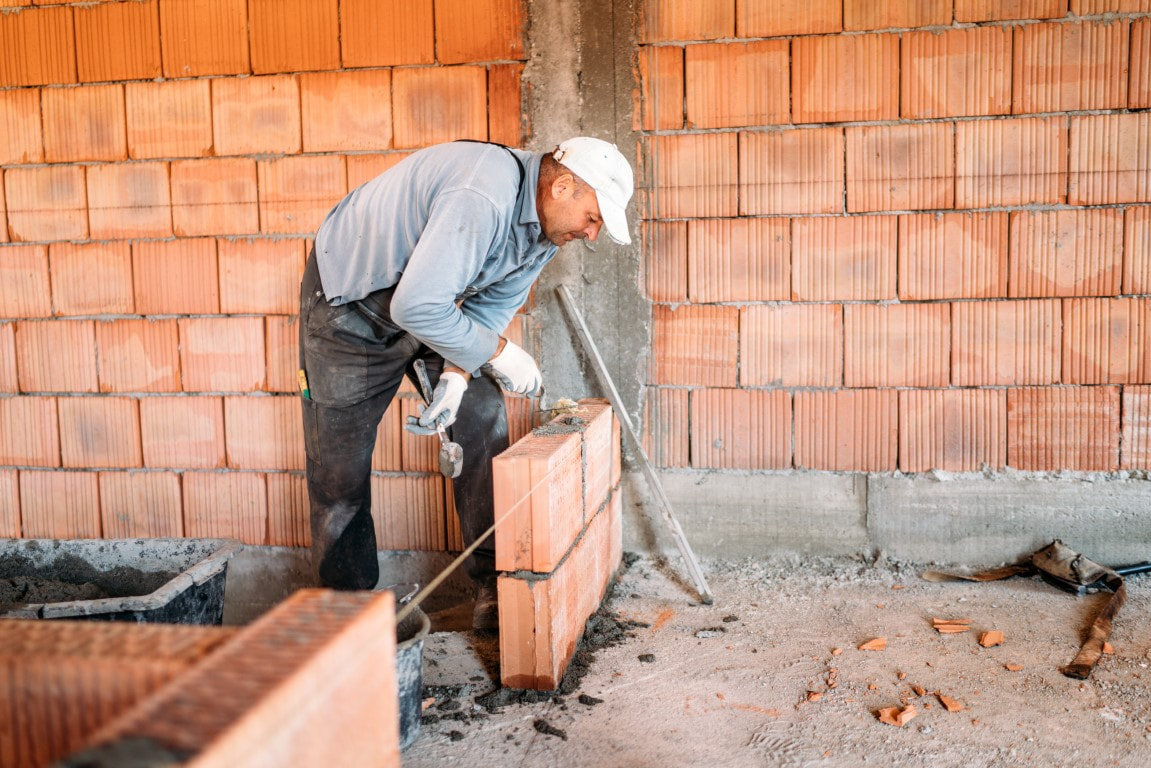Chimney Flashing and Cap Repair: Safeguard Your Home from Aspects
Chimney Flashing and Cap Repair: Safeguard Your Home from Aspects
Blog Article
Opening the Secrets of Lasting Stonework Building And Construction Practices for Eco-Friendly Structures
In the world of contemporary building, the pursuit of lasting techniques has become paramount. Among the myriad methods to environmentally friendly building, lasting masonry building and construction sticks out as a tried and true and sturdy technique that holds a wealth of untapped possibility. From the option of materials to ingenious construction strategies, the tricks to achieving sustainability within stonework construction are complex and interesting. By exploring the benefits, products, techniques, and future fads of sustainable stonework, a deeper understanding of exactly how these practices can form the future of green buildings arises.
Advantages of Lasting Stonework Building
Accepting sustainable stonework building and construction methods not only lowers ecological effect but additionally uses long-lasting economic advantages to home builders and areas. By making use of materials like recycled blocks, blocks, and stones, building contractors can substantially reduce the carbon impact of their tasks while promoting source effectiveness. Additionally, lasting stonework building techniques, such as appropriate insulation and thermal mass properties, can improve power effectiveness within structures, causing lowered operational prices in time.
Moreover, the longevity and durability of stonework frameworks add to long-lasting financial benefits. Buildings created using sustainable masonry methods often need much less upkeep and repair work, equating to cost financial savings for contractors and homeowner. The longevity of masonry materials likewise guarantees that frameworks continue to be stable and safe, lowering the need for frequent restorations or substitutes.
Eco-Friendly Masonry Materials
Using eco-friendly masonry materials is a pivotal step in the direction of improving the sustainability of construction methods and lessening ecological effect while making best use of long-term economic benefits. Sustainable stonework materials are sourced, created, and used in a way that minimizes general environmental impact. Materials such as recycled bricks, redeemed rock, and lasting cinder block are ending up being progressively popular choices for eco-conscious contractors. Recycled bricks, for instance, not only draw away waste from garbage dumps however also call for much less energy to generate compared to brand-new blocks. Recovered stone supplies an unique visual appeal while reducing the demand for new quarrying. Lasting concrete obstructs incorporate recycled accumulations and may feature enhanced insulation homes, adding to power effectiveness in structures.
Furthermore, natural products like adobe, rammed earth, and straw bales provide outstanding thermal mass buildings, minimizing the demand for heating and cooling energy. These materials are usually locally offered, advertising local economies and decreasing transportation-related carbon discharges. By picking environmentally friendly stonework materials, construction jobs can dramatically lower their ecological footprint and contribute to the production of healthier, more sustainable built settings.
Energy-Efficient Masonry Methods
Power efficiency plays an important function in improving the sustainability of masonry building methods. By implementing energy-efficient stonework strategies, building contractors can dramatically lower the total power intake of a building, leading to reduced operational costs and a smaller sized ecological footprint. One essential energy-efficient masonry technique is using thermal mass, which entails integrating dense products like concrete or block into the building's structure to absorb and keep warm. This helps manage interior temperatures, lowering the need for mechanical heating and cooling down systems.

Technologies in Lasting Stonework
Current improvements in sustainable stonework methods have brought about innovative strategies that are improving the building industry. One such development is the advancement of self-healing concrete, which utilizes bacteria installed within the concrete to heal cracks autonomously. This development not just minimizes upkeep expenses yet additionally improves the sturdiness of stonework frameworks, contributing to their sustainability.
Another remarkable advancement is using recycled accumulations in stonework construction - masonry contractor. By including materials such as smashed ceramic waste or recycled glass right into concrete blends, contractors can reduce the environmental effect of building projects while preserving architectural stability. This technique not only draws away waste from landfills however additionally saves natural deposits, making it a vital development in lasting masonry building
Furthermore, the combination of electronic design devices, such as Building Info Modeling (BIM), is transforming the method masonry structures are intended and constructed. BIM allows for even more precise computations, lowered product wastage, and enhanced power efficiency, inevitably resulting in more lasting structure practices. These technologies jointly signify an encouraging future for sustainable stonework building and construction in the era of environment-friendly structures.
Future Trends in Masonry Sustainability
With the innovative strides made in lasting masonry practices, the future patterns in stonework sustainability are positioned to more revolutionize the building sector. Among the essential trends shaping the future of masonry sustainability is the boosted combination of innovation. Innovations such as Structure Details Modeling (BIM) and virtual reality simulations are being utilized to maximize stonework building and construction procedures, leading to reduced material waste and boosted energy performance in buildings.
Furthermore, the development of unique sustainable materials is readied to play a significant role in boosting the eco-friendliness of stonework building. masonry contractor. Developments like self-healing concrete, recycled aggregates, and bio-based binders are obtaining advice grip for their ability to minimize ecological effect while maintaining architectural stability

Conclusion
In final thought, sustainable masonry construction practices provide numerous benefits for environment-friendly buildings. masonry contractor. Developments in sustainable stonework are constantly being developed to better boost the environmental efficiency of structures.
Report this page